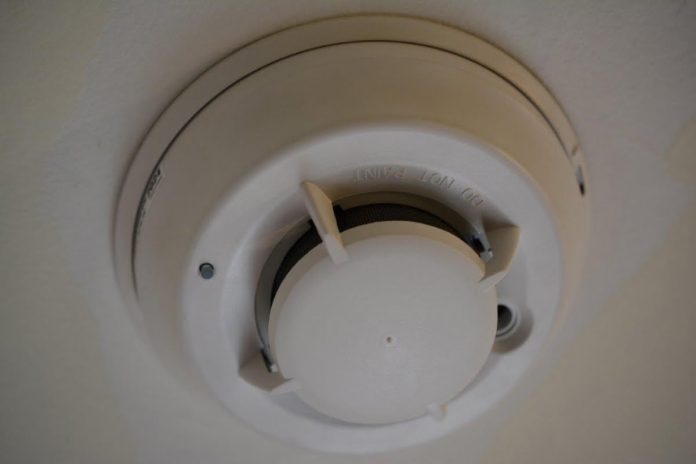Where would you avoid installing smoke alarms in a typical residence or SME application?
A: Smoke alarms shouldn’t be installed anywhere they may miss ignition events or generate nuisance alarms. It’s worth pointing out that best standard in Australia and New Zealand is considered to be the photoelectric smoke alarm. These sensors are more expensive than ionizing smoke alarms but are considered less likely to miss smouldering fires.
The sensitivity of the photoelectric alarm is lower than an ionization alarm if smoke particles are invisible or light in colour. They are also less sensitive when smoke particles are very dark in colour because dark particles absorb light from the internal LED, rather than reflecting it onto the internal facets of the photoelectric device to trigger an alarm event.
To minimize nuisance alarms, we would avoid installing photoelectric smoke sensors in places like kitchens, or near kitchen airflows. Other places to avoid include garages where there may be exhaust fumes, bathrooms where there may be steam or high humidity, laundries where there may be high humidity. Sensors should be kept at least 3 metres from such areas.
It’s all also a good idea to stay away from water heaters and unflued space heaters and open fireplaces. You need to be 6-7 metres from an unflued gas heater and that still may not be enough. In early winter gas heaters that have not been used for a while will initially burn some dust, causing smoke particles to generate false alarms. Sometimes gas supplies may incorporate contaminants, and these might generate smoke particles from time to time.
You should also avoid dusty, dirty areas or locations prone to insect infestation – if the sensor comes with dust cover this could be deployed using it during periods of construction. Some smoke alarms can be fitted with an insect screen and this might ensure it does not become a home of cockroaches in summer.
Try to avoid areas with strong air currents or fresh air flows, these drafts may prevent internal smoke from reaching the sensor and install photoelectric smoke sensors further than 1.5 metres from fluorescent lights – they emit EMI and RFI signals that can trigger sensor circuitry in generating alarms.
Dead air spaces are also to be avoided. These are typically found in the peak of cathedral ceilings or A-frame ceilings. Functional ranges for smoke alarms are between 5C and 45C. Avoid areas with higher temperatures – external metal sheds, especially in elevated locations.
Finally, smoke sensors should not be installed in places where their audible-only alarm can’t be heard – especially if they can’t be heard from sleeping quarters. Assessing the ideal location from this point of view is organic and may require hardwiring sensors in series, using smart device apps to deliver alarm notifications, or the locating of a smoke sensor in places fire ignition is unlikely but which is the furthest place from a bedroom a sleeper might be woken by a detector siren – for instance, an adjoining hallway or an internal landing.
#securityelectronicsandnetworks.com









